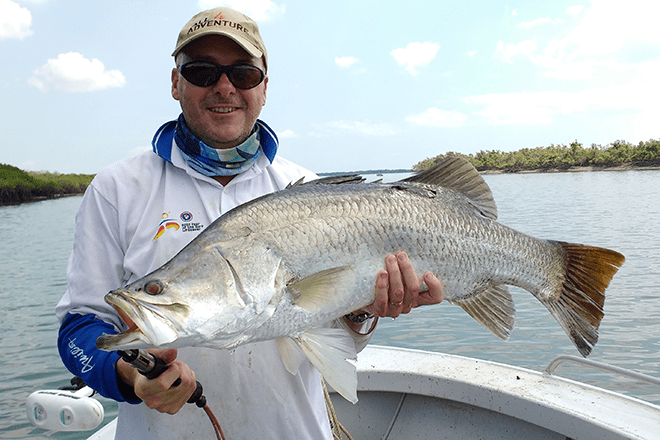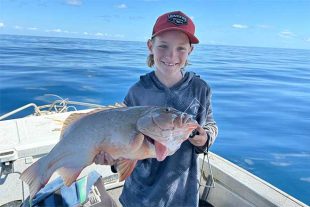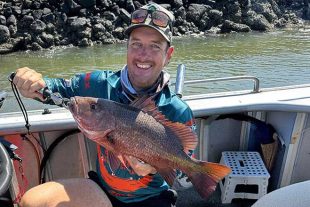Fitzroy River barra are getting better and better and for the first time in over 15 years the catch rate for legal sized barramundi in the Fitzroy River has exceeded 1 legal barra per fisher per day.
At the end of the first month of the 2017 season the daily catch rate is 1.4 legal fish per fisher. This is 135% over the catch rate for 2016 and well in excess of the 0.6-0.8 fish per fisher per day forecast by the Crystal Bowl.
Bill Sawynok, manager of Infofish Australia that has developed the Crystal Bowl, said, “While the catch rate is much higher than forecast it is expected to fall over the season but could well stay above 1 fish per fisher per day.”
Mr Sawynok added, “There has also been a jump in the catch rate for trophy fish over 1 metre. The catch rate for trophy fish has jumped from 1.0% last year to 2.2% and may be higher than that based on the number of posts on social media.”
More good news is that the average size of Fitzroy River barra is also the highest since 2000 at 692mm. There have only been 4 other years since then that the average size has exceeded the minimum legal size of 580mm and no other year has exceeded 600mm.
Mr Sawynok said, “While it is great to see all the fish being posted on social media it is also comforting that this can be backed up with hard data being collected through the Crystal Bowl.”
But not all the news is good. The climatic conditions in 2016 were not conducive for new Fitzroy River barra recruits. This year these fish should be from 300-450mm but are almost absent from catches. The recruitment for 2017 appears to be better than 2016 but it still likely to be moderate at best. If the current dry conditions continue then we may see another poor recruitment year.
Mr Sawynok said, “While the good times are here now we may see a decline in catch rates of legal fish in 2019 due to the recruitment failure in 2016 but it is too early to project that far ahead with any certainty.”
Mr Sawynok added, “Rockhampton Regional Council is leading the way by adopting the Crystal Bowl for its independent monitoring of the river. The real time monitoring and forecasting provides the Council and the community with the information it needs to make informed decisions.”
 Bush ‘n Beach Fishing Magazine Location reports & tips for fishing, boating, camping, kayaking, 4WDing in Queensland and Northern NSW
Bush ‘n Beach Fishing Magazine Location reports & tips for fishing, boating, camping, kayaking, 4WDing in Queensland and Northern NSW









